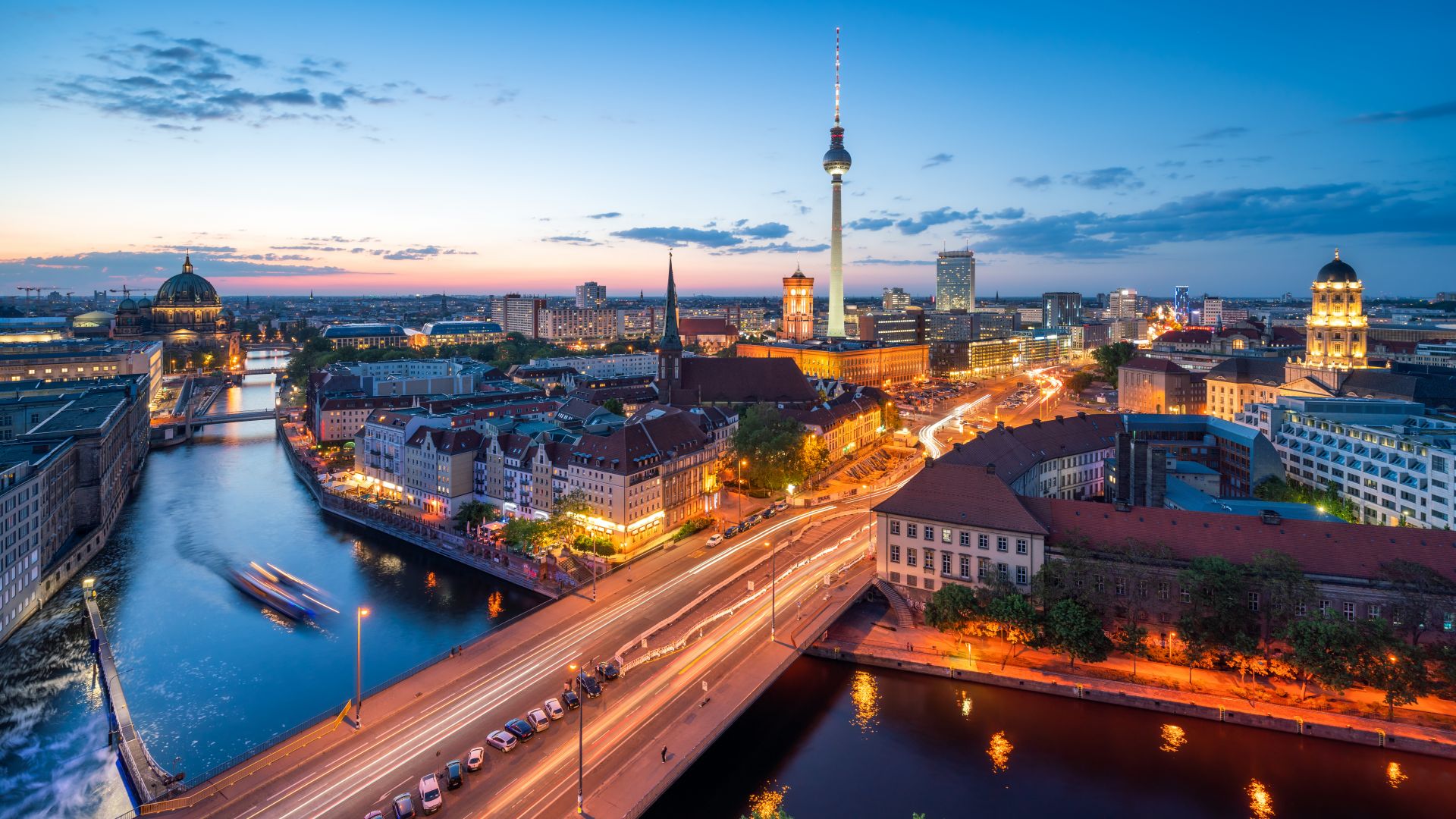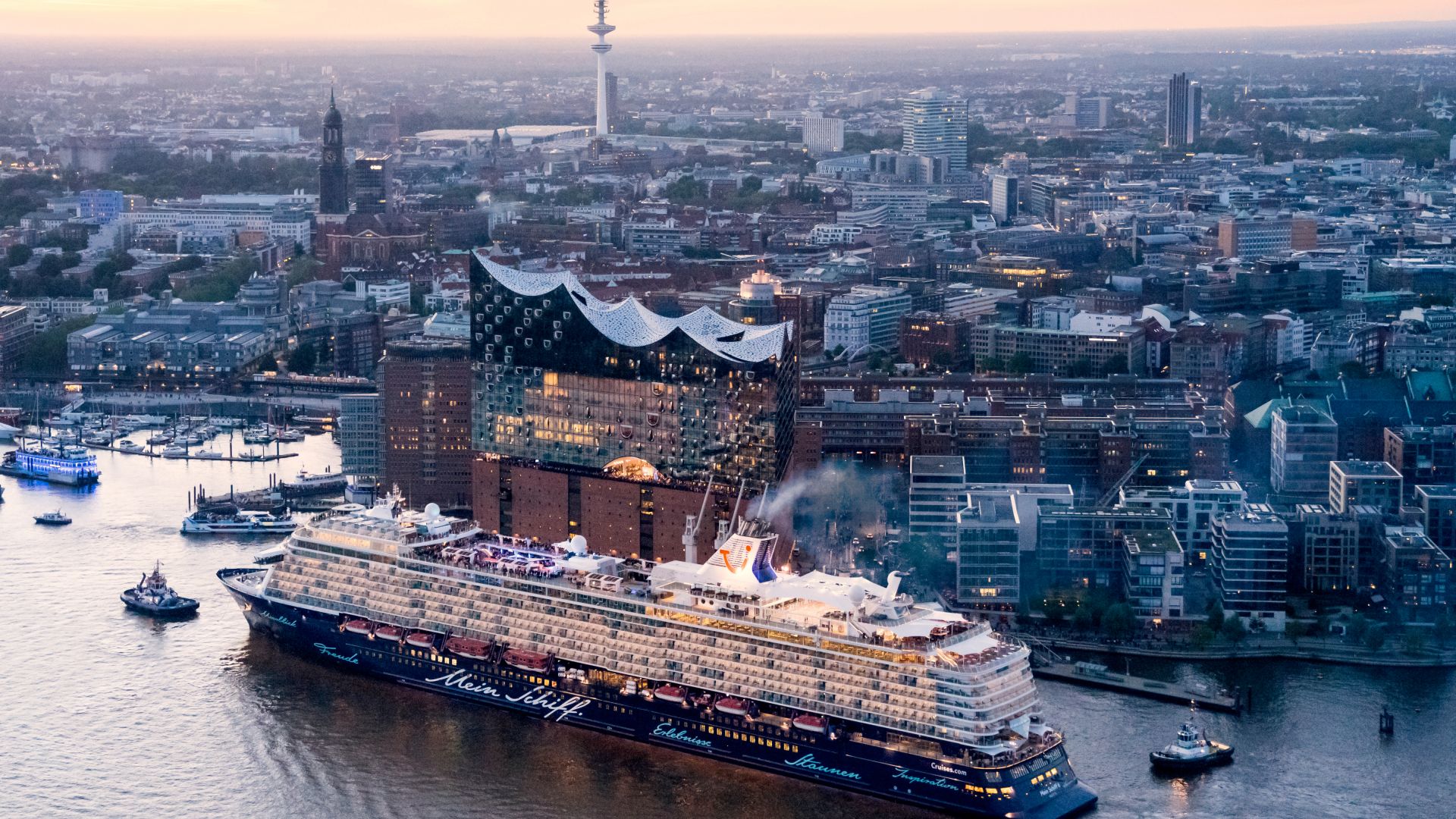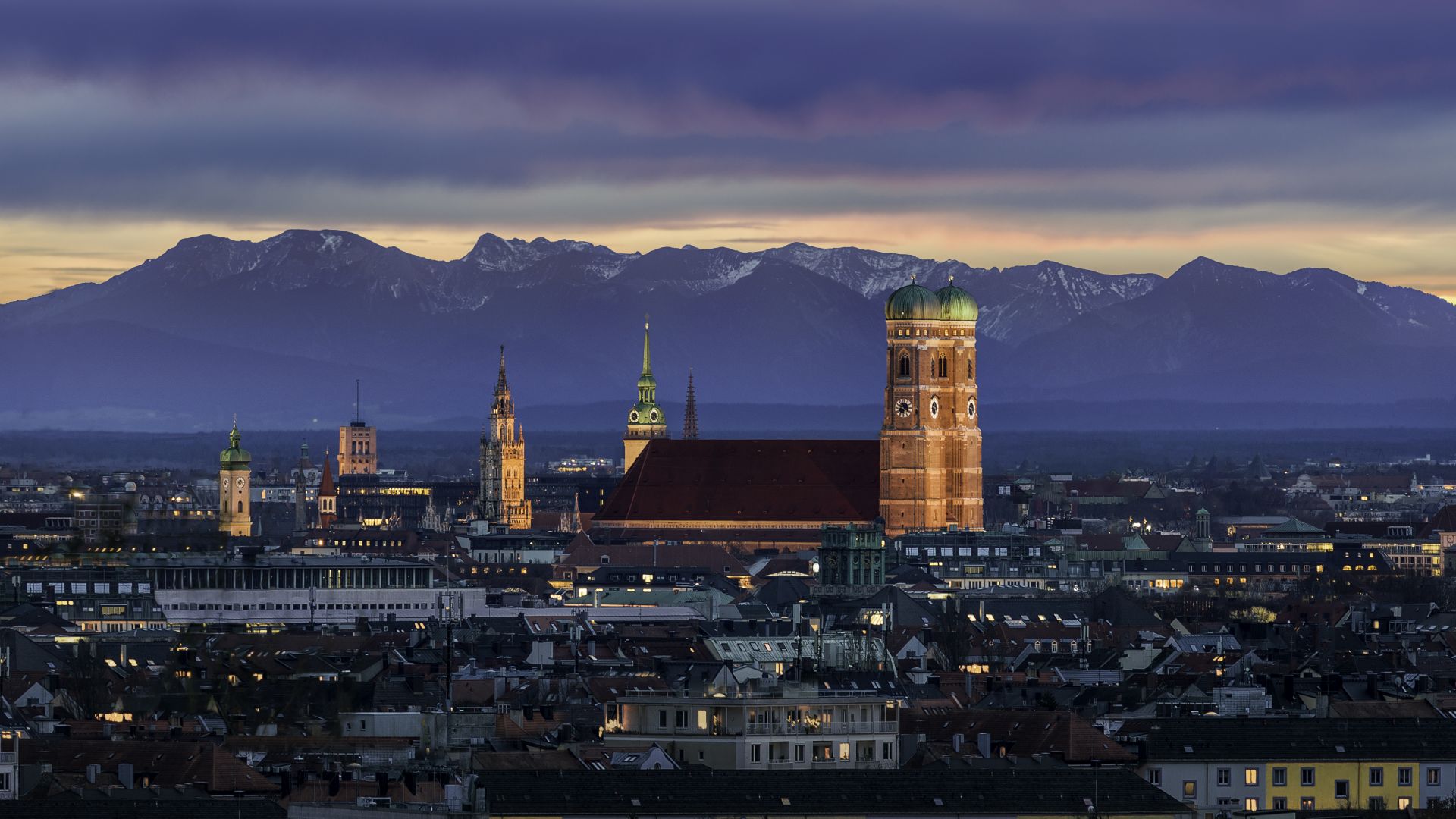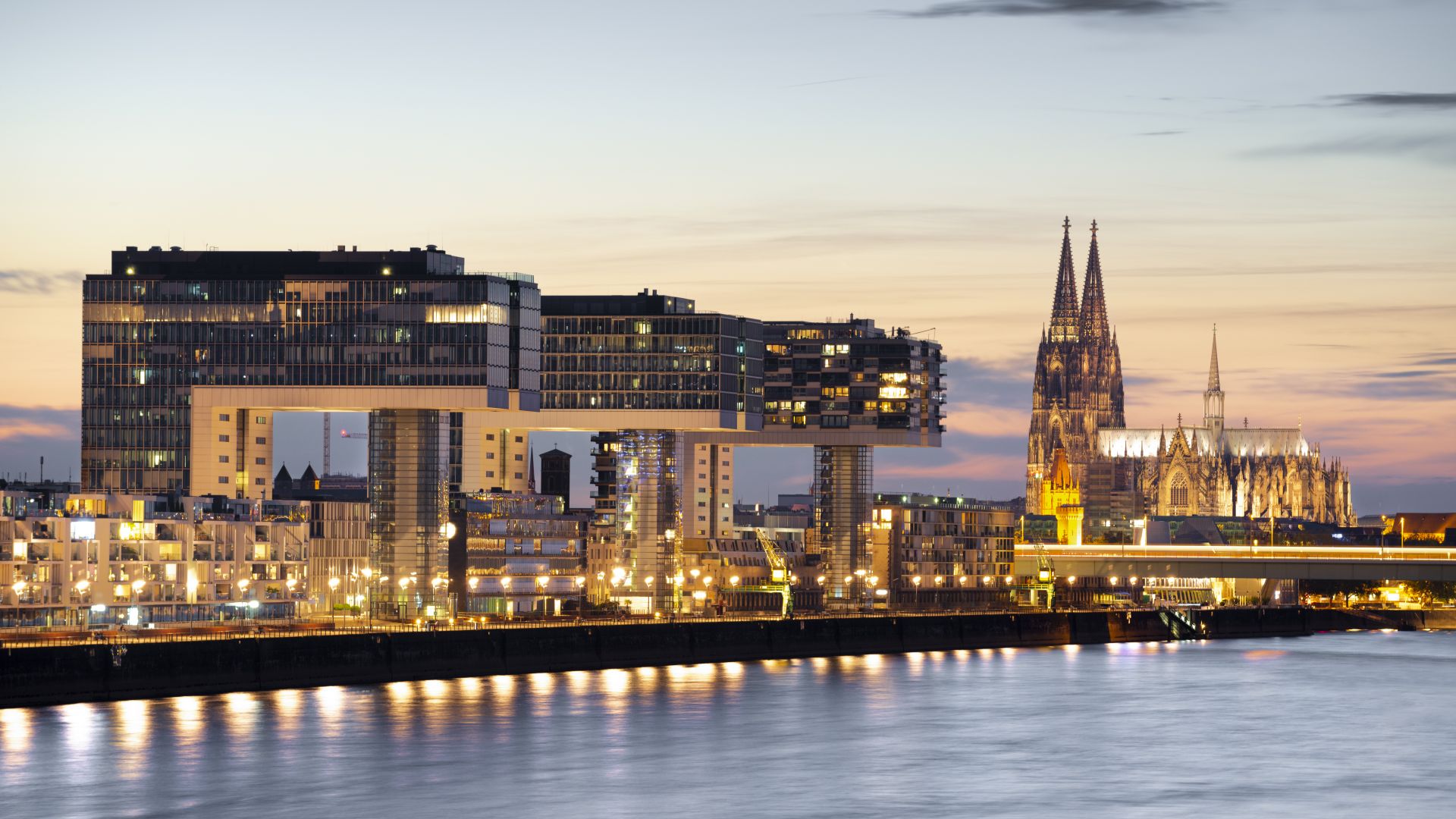Cities & Culture
Metropolises of millions: these cities show true magnitude
Berlin, Hamburg, Munich and Cologne are in every way the biggest cities in the country! The cultural, entertainment and culinary offerings are suitably diverse – there's something to suite every taste. And every length of stay...
Berlin: anything but ordinary
 Berlin: Skyline by night with a view over the Spree and of the TV Tower
©Adobe Stock (JCB)
Berlin: Skyline by night with a view over the Spree and of the TV Tower
©Adobe Stock (JCB)
This metropolis of 3.6 million people is not only the capital of the Germany (the Reichstag dome is a must-see), but is also the capital of creativity – Berlin Fashion Week is certainly not to be missed. Berlin was the first German city to be accepted into UNESCO's Creative Cities Network, and for good reason. This so-called "City of Design" also enjoys great popularity among both foreign and domestic tourists. This is undeniably also due to the city's eventful history of division and reunification, which can be felt far beyond just the Brandenburg Gate and Checkpoint Charlie. The colourful coexistence of nationalities, cultures and concepts is also unique. And a doner kebab on every corner! 26 Michelin stars make this city on the Spree a Mecca for gourmets. Chic and alternative aren't contradictions; neither are new and old. This is particularly evident on the modern Potsdamer Platz, the boulevard Unter den Linden, the constantly expanding Museum Island, and the UNESCO World Heritage sites such as the Berlin Modernist Housing Estates.
Hamburg: delightful seaside scenery
 Hamburg: Bird`s eye view of the Elbe Philharmonic Hall and the Mein Schiff cruise ship
©Hamburg Tourismus GmbH (Andreas Vallbracht)
Hamburg: Bird`s eye view of the Elbe Philharmonic Hall and the Mein Schiff cruise ship
©Hamburg Tourismus GmbH (Andreas Vallbracht)
A unique location on the Elbe and Alster. Hustle and bustle around the Reeperbahn. World class musical theatre. The Altona fish market. The Michel, as northern Germany's most important baroque church is called; all of these characteristics ensure that Hamburg is cherished by culture fans as well as party animals of all ages alike. Also because there's always something new being created between its Nordic-noble Wilhelminian style houses and its renowned theatres. Sometimes alternative, like "in der Schanze"; sometimes modern, like in the Hafen City: cue the Elbphilharmonie concert hall. Right next door, the Speicherstadt, a World Heritage Site, is home not only to brick warehouses, but also to the "Miniatur Wunderland", the world's largest model railway. The historic museum ships, "Rickmer Rickmers" and "Cap San Diego", moored not far from the Landungsbrücken, are of course significantly larger. Boat trips through the huge harbour – and catamarans to Helgoland – also start here. Seaside atmosphere in the middle of Hamburg!
Munich: see the lakes and be seen
 Munich: Church of Our Lady in front of the Alps in the sunset
©Adobe Stock (Marcel)
Munich: Church of Our Lady in front of the Alps in the sunset
©Adobe Stock (Marcel)
People see the Bavarian capital a bit like how people see FC Bayern. Some are ardent fans, admiring modern achievements such as the FC Bayern headquarters the Allianz Arena, the futuristic BMW Welt, and the airport. They are enthralled by the Oktoberfest, the world's largest folk festival and a top global advertising ambassador, and love the opera, the Pinakotheks and the English Garden. The fact that Munich always comes out on top in "best places to live" rankings is due not least to its nearby lakes and mountains (Swimming! Hiking! Skiing!). But then there are also those who take issue with the expensive prices as well as with the glamour. Both are true of Munich: "Minga", as the city is known in the local dialect, may be wealthier and less edgy than its competition, but culturally it is far ahead – visit the Residenz, Nymphenburg Palace and the Deutsches Museum, the largest technology museum in the world. Thanks to the re-natured Isar meadows, the Olympic Park, cosy beer gardens, the Foehn weather effect, and plenty of Italo-culture, the nickname "Italy's most northernmost city" is certainly justified.
Cologne: more than Carnival
 Cologne: Crane houses on the Rhine
©DZT (Francesco Carovillano)
Cologne: Crane houses on the Rhine
©DZT (Francesco Carovillano)
Since 2010, this Rhine metropolis has also been competing in the league of German cities that have over a million inhabitants. Although at the world-famous Cologne Carnival, it felt like there were at least as many residents in the cute alleys of the Old Town already. But the combination of Rhenish cheerfulness and lively pub culture (Kölsch beers being the keyword here) also attracts visitors in droves. And not only during the period between Women's Carnival Day and Ash Wednesday. More and more (party) people also flock to the banks of the impressive Rhine. There are several beach clubs along the river, and there has always been a lot going on at the waterfront, especially between the Hohenzollern and Deutzer bridges, which are adorned with around 450,000 love locks. Leisure activities range from jogging and street music, to terrace gastronomy around the huge "Rhine Boulevard" terrace at the foot of the "KölnTriangle" skyscraper. Its viewing platform offers the perfect view of the cathedral with its 157-metre towers and the world's largest church façade, making this perhaps Germany's most famous architectural monument. The Roman-Germanic Museum, just one of an above-average number of museums, offers a glimpse into the city's 2,000-year history.